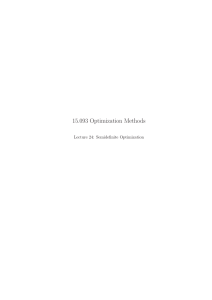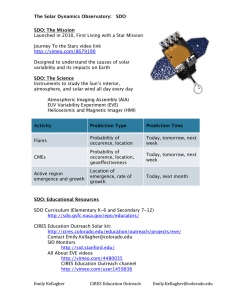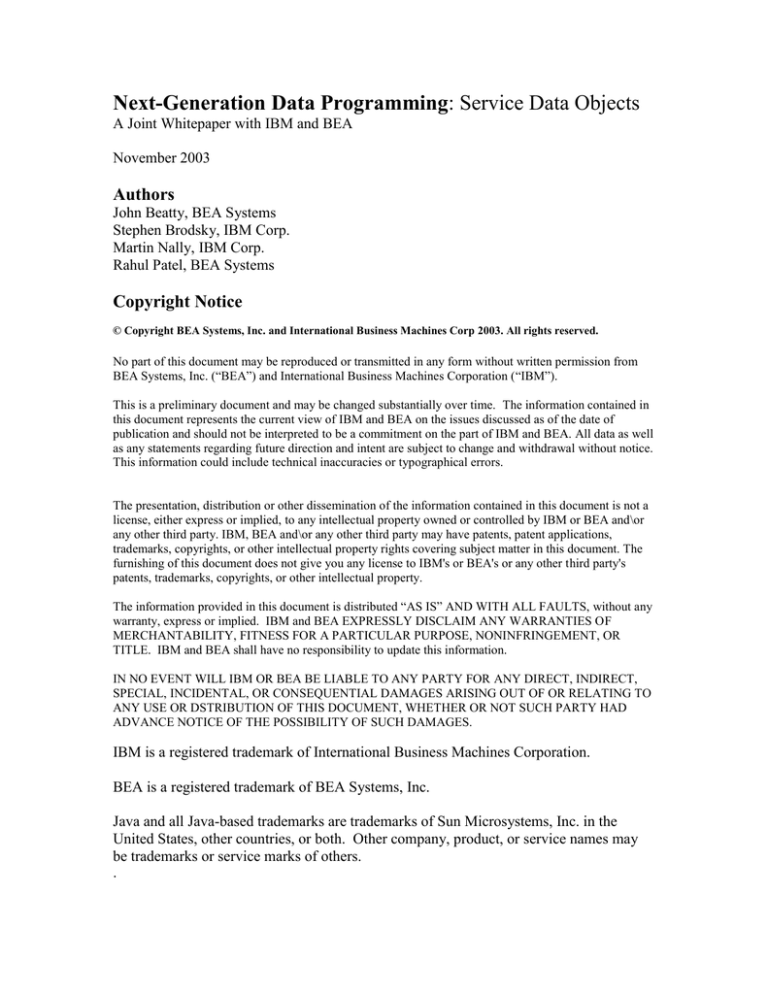
Next-Generation Data Programming: Service Data Objects
A Joint Whitepaper with IBM and BEA
November 2003
Authors
John Beatty, BEA Systems
Stephen Brodsky, IBM Corp.
Martin Nally, IBM Corp.
Rahul Patel, BEA Systems
Copyright Notice
© Copyright BEA Systems, Inc. and International Business Machines Corp 2003. All rights reserved.
No part of this document may be reproduced or transmitted in any form without written permission from
BEA Systems, Inc. (“BEA”) and International Business Machines Corporation (“IBM”).
This is a preliminary document and may be changed substantially over time. The information contained in
this document represents the current view of IBM and BEA on the issues discussed as of the date of
publication and should not be interpreted to be a commitment on the part of IBM and BEA. All data as well
as any statements regarding future direction and intent are subject to change and withdrawal without notice.
This information could include technical inaccuracies or typographical errors.
The presentation, distribution or other dissemination of the information contained in this document is not a
license, either express or implied, to any intellectual property owned or controlled by IBM or BEA and\or
any other third party. IBM, BEA and\or any other third party may have patents, patent applications,
trademarks, copyrights, or other intellectual property rights covering subject matter in this document. The
furnishing of this document does not give you any license to IBM's or BEA's or any other third party's
patents, trademarks, copyrights, or other intellectual property.
The information provided in this document is distributed “AS IS” AND WITH ALL FAULTS, without any
warranty, express or implied. IBM and BEA EXPRESSLY DISCLAIM ANY WARRANTIES OF
MERCHANTABILITY, FITNESS FOR A PARTICULAR PURPOSE, NONINFRINGEMENT, OR
TITLE. IBM and BEA shall have no responsibility to update this information.
IN NO EVENT WILL IBM OR BEA BE LIABLE TO ANY PARTY FOR ANY DIRECT, INDIRECT,
SPECIAL, INCIDENTAL, OR CONSEQUENTIAL DAMAGES ARISING OUT OF OR RELATING TO
ANY USE OR DSTRIBUTION OF THIS DOCUMENT, WHETHER OR NOT SUCH PARTY HAD
ADVANCE NOTICE OF THE POSSIBILITY OF SUCH DAMAGES.
IBM is a registered trademark of International Business Machines Corporation.
BEA is a registered trademark of BEA Systems, Inc.
Java and all Java-based trademarks are trademarks of Sun Microsystems, Inc. in the
United States, other countries, or both. Other company, product, or service names may
be trademarks or service marks of others.
.
Table of Contents
Introduction ......................................................................................................................... 2
Motivation ........................................................................................................................... 2
Architecture......................................................................................................................... 4
Data Objects .................................................................................................................... 7
Data Graph ...................................................................................................................... 8
Metadata .......................................................................................................................... 9
Use Cases .......................................................................................................................... 10
Virtual Data Access ...................................................................................................... 10
Relational Database Access .......................................................................................... 10
Reading and Writing XML ........................................................................................... 11
Opportunities..................................................................................................................... 12
Relationship with Other Technologies.............................................................................. 12
JDBC and JSR-114 ....................................................................................................... 13
Entity EJB ..................................................................................................................... 13
JDO, Hibernate, and Other Persistence Frameworks.................................................... 13
Java-XML Binding ....................................................................................................... 14
XQuery and JSR-225 .................................................................................................... 14
Web UI Data Binding and JSR-227 .............................................................................. 14
JCA and JMS ................................................................................................................ 14
References ......................................................................................................................... 14
Introduction
Service Data Objects (SDO) [1] is a specification for a programming model that unifies
data programming across data source types, provides robust support for common
application patterns, and enables applications, tools, and frameworks to more easily
query, view, bind, update, and introspect data. This white paper discusses the motivation
behind SDO, presents the SDO architecture and discusses opportunities for further
enhancements by vendors in the industry.
Motivation
While the Java™ platform and J2EE provide a variety of data programming models and
APIs, these technologies are fragmented and are not always amenable to tooling and
frameworks. Further, some of the technologies can be hard to use and may not be
sufficiently rich in functionality to support common application needs. SDO is intended
to create a uniform data access layer that provides a data access solution for
heterogeneous data sources in an easy-to-use manner that is amenable to tooling and
frameworks. SDO is not motivated by a need to replace lower-level data access
technologies (see Relationship to Other Technologies below). SDO has the following
goals:
Unified data access to heterogeneous data sources. Current data programming
technologies are more or less specific to data source types. In real-world applications,
however, data frequently comes from a variety of sources, including relational databases
(accessed through JDBC [2], Entity EJB [3], or other persistence frameworks), custom
data access layers (implemented with well-known design patterns), Web services
(accessed through JAX-RPC [4] or some other means), XML data stores, JMS [5]
messages, and enterprise information systems (accessed through JCA [6] Resource
Adapters or via some custom APIs). This heterogeneity poses a significant challenge for
application developers because of the broad diversity of programming models they need
to learn and use. The plethora of data access APIs is an even more significant challenge
for tools and frameworks that attempt to automate many common data programming
tasks, such as binding UI components to back-end data sources (e.g., JSR-227 [7]). Thus,
a common facility for representing collections of data regardless of data source type can
provide a simpler, unified programming model for the application programmer, as well as
providing new opportunities for tools and frameworks to work across heterogeneous data
sources consistently.
Unified support for both static and dynamic data APIs. Static, strongly typed interfaces
provide an easy to use programming model for application programmers. For example,
Entity EJBs, JDO [8], Hibernate [9], and other object/relational persistence mechanisms
provide typed Java interfaces to data that provides a convenient programming model to
developers (e.g., account.getFirstName() or account.getBalance()). JDBC’s
ResultSet and RowSet interfaces, in contrast, provide only dynamic, untyped data APIs
(e.g., rs.getString(“FIRST_NAME”) or rs.getFloat(“BALANCE”)). Similarly,
JAXB [10] provides code-generated Java interfaces to XML data, which makes XML
data programming much simpler than using the DOM or SAX APIs.
Neither static nor dynamic data APIs alone are sufficient, however: both are necessary.
Static data APIs provide the ease-of-use application programmers needs. But in some
cases, static Java interfaces for data is neither feasible nor desirable. For example,
dynamic queries where the shape of the resulting data is not known a priori, static Java
interfaces for the data is not feasible. Thus, a unified data programming technology needs
to support both static and dynamic data APIs seamlessly.
Support for tools and frameworks. Current data programming technologies are not
amenable to tools and frameworks across data source types. Tools and frameworks
require several key features:
Uniform access to data across heterogeneous sources. As real-world applications
use data from a variety of sources, frameworks need to rely on a uniform data
representation.
Dynamic data APIs. As discussed above, it is much more appropriate for
frameworks to use dynamic data APIs, as frameworks are generic to particular
data and code-generated interfaces are often inappropriate or not feasible.
Simple introspection (or metadata) APIs. Frameworks commonly need to
introspect the “shape” of data in order to perform data rendering, updateable
forms, data binding, etc.
Support for disconnected programming models. Many applications naturally have a
disconnected usage pattern of data access: an application reads a set of data, retains it
locally for a short period of time, manipulates the data, and then applies the changes back
to the data source. For example, this is a very common pattern in Web-based
applications: a Web client requests to view a form, a Servlet or JSP requests data in a
local read transaction and renders the data in an HTML form, the Web client submits
updates to a form, and the Servlet or JSP uses a new transaction to update the data. Best
practice typically dictates that optimistic concurrency semantics be used for this scenario,
which provides for high levels of concurrency with the appropriate business-level
semantic.
There is no data access technology today that provides this disconnected, optimistic
model in conjunction with the other features described above. Extensions to JDBC
(through the CachedRowSet in JSR-114, “RowSet Implementations” [11]) provide the
disconnected model, but as mentioned earlier, JDBC does not meet the requirements of
heterogeneous data access or ease-of-use. Similarly, many Object/Relational persistence
mechanisms (e.g., many Entity EJB implementations, JDO, Hibernate, etc.) support
optimistic concurrency semantics, but they do not provide the necessary universal data
access features.
Support for custom data access layers based on common design patterns. Many
applications use well-known design patterns (e.g., Transfer Object [12], Transfer Object
Assembler [13], Data Access Objects [14], and Domain Store [15]) to build custom data
access layers. These patterns are commonly used when the application needs to be
insulated from the physical data sources. Implementing data access layers commonly
requires a significant amount of custom code, much of which can be automated. Further,
these custom data access layers should be able to be integrated into tools and
frameworks.
Decouple application code from data access code. In order to be reusable and
maintainable, application code should be separable from data access. Data access
technologies should be amenable to this separation of concerns.
Architecture
SDO has a composable (as opposed to monolithic) architecture. The core SDO
specification provides the base APIs that are applicable to all types of data sources. The
core SDO specification, for example, does not presume a particular query language or a
particular back-end store. Thus, SQL can be used just as well as XPath [16] or XQuery
[17], or any other query language for that matter. Relational databases can be used, as can
object databases or XML data sources. The philosophy of the SDO architecture is to use
common facilities where possible, and to allow for data-source-type-specific facilities
where necessary. The core SDO specification creates the kernel that makes this flexibility
and simplicity possible.
The SDO architecture is based upon the concept of disconnected data graphs. Under the
disconnected data graphs pattern, a client retrieves a data graph (i.e., a collection of treestructured or graph-structured data) from a data source, mutates the data graph, and can
then apply the data graph changes back to the data source. Most commonly, the update is
performed with optimistic concurrency semantics, which means that if any of the
underlying data was changed before the client applies the changes, the update is rejected
and the application must take corrective action. Optimistic concurrency semantics is a
natural semantic that serves most business applications well.
Access to data sources is provided by a class of components called data mediator
services. A data mediator service is responsible for querying data sources, creating graphs
of data containing data objects, and applying changes to data graphs back to data sources.
The client is typically disconnected from the data mediator service: it connects only to
retrieve or update a data graph.
Figure 1: Disconnected data graph architecture
SDO provides a core set of components and services, which are then augmented by SDOenabled tools and frameworks. The SDO architecture includes the following:
SDO Core. The core SDO specification [1] contains the primary components
programmers routinely work with, including Data Objects, which represents the
data, and Data Graphs, which represents the data graph. The SDO specification
also provides a metadata API that allows clients to introspect the data model. The
SDO metadata API enables the tools and frameworks to work uniformly with
heterogeneous data sources. The metadata API supports essential concepts from
other more comprehensive metamodels, such as W3C XML Schema [18], the
SQL relational model, and the Essential Meta Object Facility (EMOF) [19].
SDO Data Mediator Services. A Data Mediator Service provides access to data
sources. Data Mediator Services create Data Graphs by reading data from
backend data sources, and can update data sources based on changes made to Data
Graphs. Data Mediator Services can come in various shapes and sizes, and could
include, for example, XML mediators that can read and write to XML data
sources, relational mediators that can read and write to JDBC-based data sources,
application-defined entity models, or even mediators that accept XML Query and
read and write a variety of XML and non-XML data sources. Specifications for
Data Mediator Services are on the SDO roadmap.
SDO-enabled Tools. SDO-enabled tools include code generators, metamodel
converters, schema converters, data modeling tools, schema modeling tools, etc.
SDO-enabled Runtimes and Frameworks. The runtimes and frameworks work
with the various components in SDO to perform a variety of tasks, such as data
binding to UI components. The SDO architecture is a key enabler for these
runtimes and frameworks.
Figure 2: SDO and the Java platform
The various components in this architecture are Data Objects, Data Graphs, and Data
Mediator Services. Additionally, metadata plays a key role. These components have the
following responsibilities:
Data Object. Data Objects hold the actual data, including primitive values and
references to other Data Objects. Data Objects also have references to their
metadata, which allows the Data Object to be introspected for information about
data types, data relations, and data constraints.
Data Graph. A Data Graph is conceptually a set of data that provides the unit of
transfer between components or tiers. In particular, a Data Graph is a multi-rooted
set of Data Objects. The Data Graph records all changes to data, including new
Data Objects, changed Data Objects, and removed Data Objects.
Metadata. Metadata about Data Objects enables development tools and runtime
frameworks to introspect data, including data types, relationships, and constraints.
SDO provides a common metadata API across data source types to enable generic
tools and frameworks.
Data Mediator Service. A Data Mediator Service is responsible for interacting
with a data source to produce Data Graphs representing the data. The Mediator is
also responsible for applying changes in a Data Graph back to a data source.
Figure 3: Components of the SDO solution
The relationships between the objects in SDO can be expressed in a UML model:
DataGraph
0..1
DataObject 0..*
Type
DataMediatorService
1
ChangeSummary
1
1
0..*
0..*
Sequence
Property
0..*
Figure 4: UML model of core SDO components
Data Objects
A Data Object holds data as a set of properties. These properties include both primitive
values (such as XML attributes and XML element contents) and references to other Data
Objects (e.g., a PurchaseOrder Data Object might have a Customer property). In the case
of XML data, a Data Object would commonly represent an element, the element’s
attributes, values of simple-type child elements, and references to Data Objects
representing complex-type child elements. In the case of relational data, a Data Object
would commonly represent a row of data. A foreign key would be represented by a
reference to another Data Object, representing a row in another table.
Data Objects can be introspected with the SDO metadata API (described below). This
allows programs to get information about types, relationships, and constraints. Note that
introspection is not necessarily limited to the SDO metadata API: some implementations
might provide access to native metadata, such as an XML Schema object model.
However, the SDO metadata API provides the most commonly needed metadata and
applications should revert to other metamodels only when necessary.
Data Objects offer, at minimum, a dynamic data API for reading and modifying objects,
including the object’s properties. This dynamic API uses simple XPath expressions to
locate Data Objects within the Data Graph. Optionally, static Java interfaces for Data
Objects can be generated from models or schemas (e.g., SQL relational schemas, XML
Schema definitions, EMOF models, etc.). This provides a user-friendly API at
development time. For example, given an XML Schema definition for a Purchase Order,
a PurchaseOrder Java interface can be generated. Similarly, given JDBC metadata for a
PURCHASE_ORDER table, a PurchaseOrder Java interface can be generated.
The core SDO specification does not define Java interface generation for Data Objects.
Existing Java interface generation solutions and specifications can be used and integrated
with SDO (e.g., JAXB). For example, many solutions exist for generating Java interfaces
from XML Schema definitions. Java interface generation for SQL relational data and data
from other sources is also possible.
Note that static Java interfaces for Data Objects are not always necessary or desirable.
The dynamic data API is important because code generation is not appropriate for all
circumstances. There will be many cases where runtime frameworks will interpret
metadata and use the dynamic data API. However, statically typed interfaces provide
ease-of-use to the programmer at development time (e.g., compile-time type checking,
availability of code completion, etc.).
Data Objects have rich relationship support, including support for 1:1, 1:n, and n:m
relationships. Data Objects manage relationships, including relationship inverses. For
example, say Data Object A references Data Object B, and B maintains an inverse
reference to A. Then, the program moves B from A to some Data Object C. In this
scenario, B’s relationship will automatically be changed from A to C. Containment (or
ownership) relationships are also supported, which enables mediators to make proper
decisions (e.g., cascading deletes).
Data Graph
A Data Graph represents a set of data. More specifically, it holds a set of Data Objects.
Data Graphs are typically the unit of transfer between components in a system. As such,
Data Graphs are responsible for recording change summaries. Data Graphs can optionally
track change history for all the Data Objects in the Data Graph. This change history may
be accessed in the form of a Change Summary, a property of the DataGraph, typically by
a data mediator service that wishes to apply the changes to a back-end data source.
The Change Summary provides information on which Data Objects have been
added, removed, and updated. For updated Data Objects, the Change Summary
provides both old and new values for updated properties.
Metadata
Data is sometimes described in terms of layers of instance data, metadata, and
metamodel. The base layer is the data itself, or the instance data. This data conforms to a
data model or schema, which is described by the metadata. This metadata itself conforms
to a model, which is called the metamodel.
To draw an analogy to XML, an XML instance document is the instance data, the schema
(e.g. an XML Schema Definition, or XSD) is the metadata, and the schema language (e.g.
W3C XML Schema) is the metamodel. Similarly, with relational data, the ResultSet or
RowSet contains the data, the data definition is the metadata (surfaced through the
RowSetMetaData interface), and the SQL relational model is the metamodel.
Figure 5: Relationship between data, metadata, and metamodels
SDO provides a small metadata API (and implicitly, a slim metamodel). This metamodel
is not meant to be comprehensive like XML Schema, the SQL relational metamodel, or
EMOF. Rather, it provides the essential client view of the metadata that applications and
frameworks need for common introspection tasks.
This enables a variety of use cases where normalized introspection of data is useful. A
common use case is tools that perform data binding between Web UI components and
data sources. SDO enables these data binding frameworks to work with XML data,
relational data, JCA record data, etc. independent of their native metamodels.
Use Cases
SDO enables many common use cases, a few of which are described here.
Virtual Data Access
SDO can be used in a virtual data access architecture that provides universal, aggregated
data from multiple, heterogeneous data sources. This is a common architectural pattern,
even when the underlying data sources are all relational data accessed through JDBC or
entity EJBs. A “virtual data mediator” could support rich query languages, such as
XQuery. The Data Graph from the virtual data mediator can then be inspected,
introspected, updated, and then sent back to the original data sources – all without the
SDO programmer needing to know or learn intricacies of back-end data access across
various types. This is an extremely critical requirement in enterprise environments where
“data provision” function is formally separated from “data use” function for variety of
reasons including skills, security, and governance. Further, this separation if also very
important in Service-Oriented Architecture (SOA) implementations. SDO provides the
unified client data and metadata PI that enables tools, frameworks, and runtimes to
function in this environment.
Figure 6: Using SDO for virtual data access
Relational Database Access
The SDO programming model is compelling for programming against relational data
sources because it provides the disconnected access model along with both static and
dynamic data APIs. In fact, the SDO architecture is essentially a codification of widely
used J2EE design patterns, including Transfer Object, Transfer Object Assembler, and
Domain Store.
A relational data mediator service can provide SQL-based query capabilities. The
relational mediator could use JDBC to implement queries and updates:
Figure 7: Using SDO for relational data
SDO can also integrate with object-relational persistence mechanisms, including Entity
EJB, JDO, and Hibernate.
Figure 8: Using SDO with Entity EJBs
Reading and Writing XML
SDO enables a comprehensive programming model for XML, including querying,
reading, and updating. Under this architecture, the XML data source could be an XML
file, a native XML data store, or a relational database with XML capabilities. Note that
SDO is meant to provide a higher-level abstraction than XQuery APIs, such as JSR-225
(“XQuery API for Java”) [20]. For example, an “XML Data Mediator Service” that can
talk to an XQuery-capable XML data source might works as follows:
Figure 9: Using SDO in an XML use case
Opportunities
This SDO specification provides the core of the customer solution.. We anticipate that
many vendors will build tools, data mediator services and frameworks which will further
integrate SDO with existing and future data access technologies.
Tool support. SDO enables a wide range of tool support. Java interface generation tools
are necessary to provide static data APIs that integrate with SDO. For example, a tool
could be provided that generates static data APIs from XML Schema and is integrated
with the SDO APIs. Likewise, a tool could be provided that generates static data APIs
from relational schemas and is integrated with the SDO APIs. Yet another tool could be
used to generate interfaces from UML [21] models. In fact, many of these tools exist
today, and simply need to be extended to support SDO. Follow-on specifications may
define how Java interfaces are generated from various data sources if there is not an
appropriate specification already.
Data mediator services. SDO requires data mediator services to be useful. Initially,
vendor-specific data mediator services will exist. Existing persistence mechanisms, such
as popular object/relational persistence frameworks, could be extended to become SDOcapable data mediator services. Similarly, XQuery engines could be turned into SDOcapable data mediator services. As more experienced is gained building data mediator
services, it will be useful to standardize data mediator service interfaces.
Frameworks. SDO enables a variety of frameworks that will provide ease-of-use for
many common data programming tasks. For example, frameworks could use SDO to
automate custom data access layers that use the Transfer Object, Transfer Object
Assembler, Data Access Object, and Domain Store design patterns. Other frameworks
could use SDO to bind user interface components (e.g., grids, list boxes, etc.) to back-end
data sources. JSR-227 proposes such a framework, and it could use SDO to provide the
necessary primitives.
Relationship with Other Technologies
SDO integrates seamlessly other data programming technologies. We describe here how
SDO relates to, and integrates with, other data programming technologies and APIs.
The following table compares SDO to other data programming technologies:
Model
API
Data Source
JDBC RowSet Connected
JDBC
Disconnected
CachedRowSet
Entity EJB
Connected
Dynamic
Dynamic
Relational
Relational
Static
Relational
JDO
Static
Relational,
Object
Connected
Metadata API Query
Language
Relational
SQL
Relational
SQL
Java
introspection
Java
introspection
EJBQL
JDOQL
JCA
DOM and SAX
Disconnected
N/A
Dynamic
Dynamic
Record-based Undefined
XML
XML infoset
JAXB
N/A
Static
XML
JAX-RPC
N/A
Static
XML
SDO
Disconnected
Both
Any
Undefined
XPath,
XQuery
N/A
Java
introspection
Java
N/A
introspection
SDO
Any
metadata API,
Java
introspection
JDBC and JSR-114
JDBC provides a connected model for programming against relational data sources with a
dynamic data API. JSR-114 (“RowSet Implementations”) provides extensions to the
JDBC that provides some, but far from all, of the features enabled by SDO. JSR-114
provides the JoinRowSet, which can represent data across table joins, and the
CachedRowSet, which provides a disconnected model for data access.
SDO provides both of these features, but differs from JDBC and JSR-114 in two key
ways: (a) JDBC is meant for data access to relational data sources, while SDO can be
used with any type of data source, and (b) JDBC provides only a dynamic data API,
while SDO naturally supports static data APIs and dynamic data APIs.
A data mediator service for relational data would presumably use JDBC and possibly
JSR-114 for its implementation.
Entity EJB
SDO can be used both in conjunction with Entity EJBs via a data mediator service that
interfaces with the entity beans. In fact, this architecture is a manifestation of the
commonly used Transfer Object and Transfer Object Assembler design patterns.
In some cases, using SDO in conjunction with a relational data mediator service can
obviate the need for Entity EJB. However, Entity EJB provides a connected, transactional
model that is more appropriate for some applications.
JDO, Hibernate, and Other Persistence Frameworks
JDO, Hibernate, and other object-relational persistence frameworks provide a variety of
the characteristics that SDO provides. For example, both JDO and Hibernate provide the
convenient static data APIs. Hibernate, and some JDO implementations, provide the
optimistic concurrency, disconnected model. These persistence frameworks could be
extended to become SDO-capable data mediator services, which allows these frameworks
to work within the SDO solution.
Java-XML Binding
Java-XML binding frameworks, such as JAX-RPC, JAXB, SAAJ [22], XML Beans [23],
and the Eclipse EMF [24] and XSD [25] tools enable XML data to be bound to Java
objects. These Java interfaces providing access to the data are generated from schema
languages such as XML Schema or RELAX NG [26]. These generated interfaces
provides a programmer-friendly way of reading, writing, and manipulating XML data.
Java-XML binding frameworks can be extended such that they are integrated with SDO.
For example, JAXB could be used as the tool that provides the static data API, and be
extended to support the Data Graph and Data Object interfaces.
XQuery and JSR-225
XQuery is the forthcoming standard for querying XML data and can be used with XML
data sources. XQuery can also be used more generally against any data repository. Thus,
a data mediator service can use XQuery for the query language.
JSR-225 (XQuery API for Java) is a proposal for a standard API for XQuery. This API
will be lower level than SDO, and would be useful in a standard implementation of a
XML mediator service in SDO environment. In this respect, JSR-225 will play a role
similar to JDBC in case of relational mediators
Web UI Data Binding and JSR-227
JSR-227 (“A Standard Data Binding & Data Access Facility for J2EE”) proposes a
facility to declaratively bind Web user interface components to heterogeneous back-end
data sources. For example, JavaServer Faces components (e.g., a grid component) could
be bound to relational data or XML data from a Web service. The SDO specification
provides the lower-level primitives that could be used with JSR-227.
JCA and JMS
The JCA Common Client Interface (CCI) uses the Record abstraction to communicate
data with enterprise resources. These records have no particular structure. With SDO, the
client application could use Data Graphs to communicate with the enterprise resources.
Similarly, JMS has an unstructured Message construct. SDO Data Graphs can be used to
send and receive data on JMS queues and topics.
References
[1] http://dev2dev.bea.com/technologies/commonj/index.jsp
or
http://www.ibm.com/developerworks/library/j-commonj-sdowmt/
[2] JDBC Data Access API, http://java.sun.com/products/jdbc/
[3] Enterprise JavaBeans, http://java.sun.com/products/ejb/
[4] Java API for XML-Based RPC, http://java.sun.com/xml/jaxrpc/
[5] Java Message Service, http://java.sun.com/products/jms/
[6] J2EE Connector Architecture, http://java.sun.com/j2ee/connector/
[7] A Standard Data Binding & Data Access Facility for J2EE,
http://www.jcp.org/en/jsr/detail?id=227
[8] Java Data Objects, http://java.sun.com/products/jdo/
[9] Hibernate, http://www.hibernate.org/
[10] Java API for XML Binding, http://java.sun.com/xml/jaxb/
[11] JDBC RowSet Implementations, http://jcp.org/en/jsr/detail?id=114
[12] http://java.sun.com/blueprints/corej2eepatterns/Patterns/TransferObject.html
[13]
http://java.sun.com/blueprints/corej2eepatterns/Patterns/TransferObjectAssembler.html
[14] http://java.sun.com/blueprints/corej2eepatterns/Patterns/DataAccessObject.html
[15] Core J2EE Patterns: Best Practices and Design Strategies, 2nd ed., Deepak Alur,
John Crupi and Dan Malks
[16] XPath, http://www.w3.org/TR/xpath
[17] XQuery, http://www.w3.org/TR/xquery/
[18] XML Schema, http://www.w3.org/TR/xmlschema-1/ and
http://www.w3.org/TR/xmlschema-2/
[19] Meta Object Facility, http://www.omg.org/docs/ad/03-04-07.pdf
[20] XQuery API for Java, http://www.jcp.org/en/jsr/detail?id=225
[21] Unified Modeling Language, http://www.omg.org/uml/
[22] SOAP with Attachments API for Java, http://java.sun.com/xml/saaj/
[23] XMLBeans, http://xml.apache.org/xmlbeans/
[24] Eclipse Modeling Framework, http://www.eclipse.org/emf/
[25] Eclipse XML Schema Infoset Model, http://www.eclipse.org/xsd/
[26] RELAX NG Specification,
http://www.oasis-open.org/committees/relax-ng/spec-20011203.html


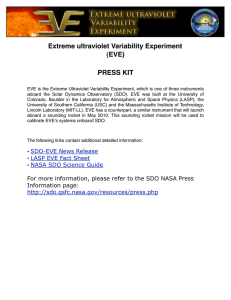
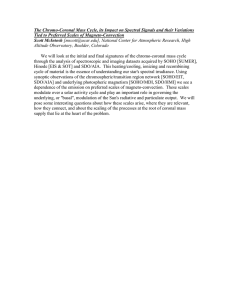
![W. Dean Pesnell [], NASA Goddard Space Flight Center, Greenbelt, Maryland](http://s2.studylib.net/store/data/013086491_1-e78f2197b7dcbc977f52331f68872cff-300x300.png)
